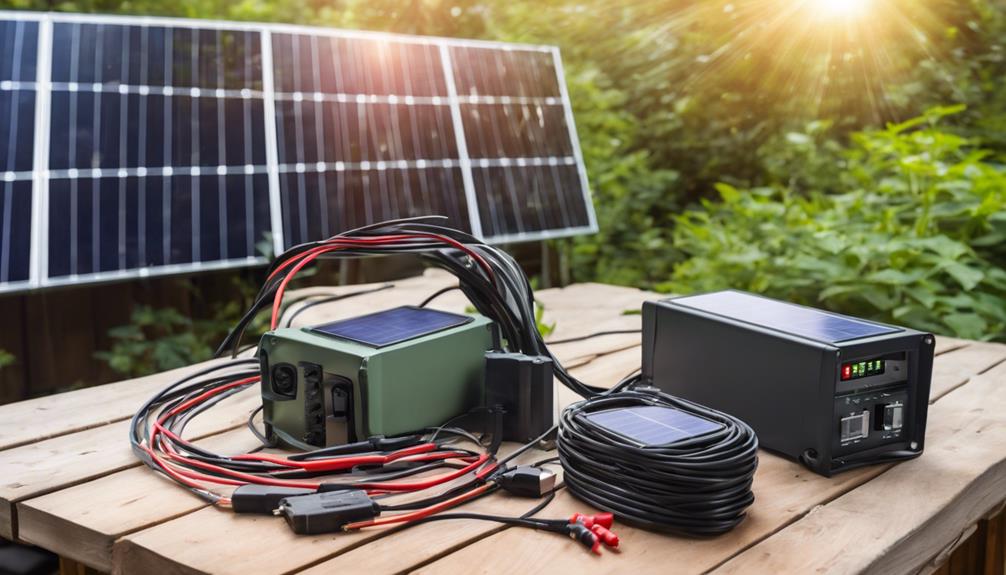
In recent years, the demand for renewable energy has surged, with many homeowners looking to reduce their carbon footprint and energy bills. One of the most popular solutions is the use of DIY solar panel kits. These kits empower individuals to harness solar energy effectively and affordably. In this comprehensive guide, we will explore the benefits, components, installation process, and considerations involved in using DIY solar panel kits.
Understanding DIY Solar Panel Kits
DIY solar panel kits are pre-packaged systems that allow homeowners to generate their own electricity using solar energy. These kits typically include solar panels, inverters, mounting hardware, and sometimes batteries. The appeal of DIY solar panel kits lies in their affordability and the satisfaction of installing your own energy system. By opting for a DIY approach, homeowners can save on labor costs associated with professional installation, making renewable energy more accessible.
The Benefits of DIY Solar Panel Kits
There are numerous benefits to using DIY solar panel kits. Firstly, they provide cost savings. Purchasing a kit can be significantly cheaper than hiring a professional installer. Additionally, installing your own system can lead to long-term savings on electricity bills. Furthermore, DIY solar panel kits promote sustainability. By generating your own power, you reduce reliance on fossil fuels, contributing to a cleaner environment. Lastly, the process of installation can be educational and rewarding, allowing homeowners to learn about solar energy and technology firsthand.
Components of a DIY Solar Panel Kit
A typical DIY solar panel kit consists of several key components. The most obvious is the solar panels themselves, which convert sunlight into electricity. Additionally, most kits include an inverter, which is essential for converting the direct current (DC) produced by the panels into alternating current (AC) for use in homes. Most kits also feature mounting hardware, allowing users to securely attach the panels to their roofs or ground mounts. Some advanced kits may include batteries for energy storage, enabling homeowners to use solar power even when the sun isn’t shining.
Installation Process of DIY Solar Panel Kits
Installing a DIY solar panel kit can be a straightforward process if you follow the instructions carefully. Begin by selecting an appropriate location for your solar panels, ensuring they receive maximum sunlight exposure. Next, assemble the mounting hardware and secure it to the chosen area. Once the mounts are in place, attach the solar panels. After the panels are mounted, connect them to the inverter, which should be installed in a location that complies with local building codes. Finally, connect the inverter to your home’s electrical system, ensuring all safety protocols are followed. It may be beneficial to consult an electrician to ensure everything is connected properly.
Cost Considerations for DIY Solar Panel Kits
When considering the purchase of a DIY solar panel kit, it’s essential to evaluate the costs involved. The price of solar kits can vary significantly based on the size, brand, and included components. On average, basic kits can start as low as $200, while larger, more comprehensive systems may exceed $2,000. Additionally, it’s important to factor in potential installation costs if you require professional assistance for any part of the process. While DIY kits are generally more affordable, it’s crucial to budget for any necessary permits, inspections, or additional equipment you may need.
Maintenance and Care for DIY Solar Panels
Maintaining your DIY solar panel system is essential to ensure its longevity and efficiency. Thankfully, solar panels are relatively low-maintenance. Regularly check for dirt or debris that may accumulate on the panels, as this can reduce their efficiency. If necessary, gently clean the panels with water and a soft cloth. Additionally, inspect the wiring and connections periodically to ensure everything is functioning correctly. If you notice any issues, consult the kit’s manual or reach out to the manufacturer for assistance. Most solar panels come with warranties, providing peace of mind regarding their durability.
Common Misconceptions About DIY Solar Panel Kits
Despite the growing popularity of DIY solar panel kits, several misconceptions persist. One common myth is that solar energy is only effective in sunny climates. In reality, solar panels can generate electricity even on cloudy days, though their efficiency may be reduced. Another misconception is that DIY solar systems are too complicated for the average homeowner to install. In truth, many kits are designed with ease of installation in mind, often including step-by-step instructions. Lastly, some people believe that DIY solar kits don’t provide enough power for a home. However, with the right kit and proper planning, it’s possible to create a system that meets most household energy needs.
Conclusion: Is a DIY Solar Panel Kit Right for You?
In conclusion, DIY solar panel kits present a fantastic opportunity for homeowners looking to embrace renewable energy. With their affordability, ease of installation, and environmental benefits, these kits are an excellent choice for those willing to invest time and effort into their energy solutions. By understanding the components, installation process, and maintenance requirements, you can make an informed decision about whether a DIY solar panel kit is right for you. As we move toward a more sustainable future, harnessing the power of the sun with DIY solar panel kits can be a significant step in the right direction.
By embracing solar energy, you not only reduce your energy costs but also contribute to a cleaner planet for future generations. Whether you’re a seasoned DIY enthusiast or just starting, the world of solar energy is waiting for you to explore.





